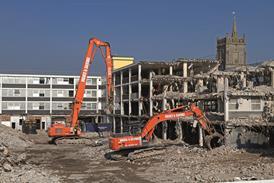A study of the capabilities of several leading products, found that all the facilities that really matter can be created at a fraction of the cost.
The obvious way to implement electronic data management is with software designed specifically for the purpose. This is often structured to address a problem that does not arise in paper-based offices: how to integrate into the same filing system, documents that already exist in electronic form – such as word-processor files – and those initially on paper that require converting, like incoming mail.
Dedicated data management software
There are numerous dedicated electronic data management software applications on the market. These fall into three main groups:
Bespoke systems typically cost thousands of pounds and are normally used only by large corporations with special needs; even off-the-shelf corporate products are priced in the high hundreds or low thousands. They are all disproportionately expensive for the needs of small and medium-sized design practices. However, some features of these are worth looking for in more affordable forms.
Xerox DocuShare is a good example of a modern, mid-range corporate electronic data management product. The latest version was released in March 1999.
DocuShare allows files to be stored in their native formats and is designed for use in an intranet environment. It solves the problem of providing quick viewing access to multiple file formats by creating html versions for viewing through a Web browser. Paper documents must be converted into electronically-readable forms using an independent application.
With DocuShare, a series of virtual folders is set up as hierarchical document collections and documents are put into them by dragging and dropping from Windows Explorer or a source application like Microsoft Word. The document files themselves are not moved, a hyperlink is created to them which means that the document can appear in several places. Documents can be annotated with metadata and, once it is in the collection, its contents are added automatically to a full-text index.
DocuShare has facilities to track changing versions of documents and limit access to sensitive documents, and interfaces can be customised to suit corporate needs.
Overall, DocuShare is a highly capable and attractive basis for electronic data management for any size of organisation, but it is pricy and needs a sophisticated IT infrastructure to support it.
Personal products are more affordable, at around £30-£60 a desk. While cheap, there are questions about whether they are capable, efficient and future-proof enough for serious business use. It is wise to use a future-proof system which avoids reliance on proprietary file formats that may become obsolete (table 1).
To assess such products, specifications were studied in detail, and hands-on trials carried out with the most promising of them. Product literature and magazine reviews were also utilised.
DocuShare met all the criteria, except affordability. Otherwise no small-office electronic data management products were found that met the criteria adequately. Invu and Demios Librarian, for example, have complex interfaces and no content search capability.
Pagis stores scanned documents in a proprietary file format and seems too slow an indexer for an office environment. PageKeeper's content searching is also slow and its handling of the pdf format is weak, Enfish Pro cannot handle pdf at all.
New versions and completely new programs are constantly appearing, and as they gain features to match their competitors they are becoming increasingly similar in basic capability. The latest PageKeeper, for example, builds a full-text index, so its content searching should be much faster.
Pagis, PageKeeper and Enfish are all worth a look. Enfish, is arguably the most attractive apart from its lack of pdf support.
Basic object-based data management
The most important and heavily used information resources in a design office are the project files. Generally, the most useful way to manage these electronically is with a well-structured filing system that works with file viewing software to make documents easily accessible without concerning itself with what they are: a simple 'object based' approach.
The Windows operating system itself contains the foundations for object-based electronic data management in File Manager (Windows 3.11) or Windows Explorer (Windows 95 and 98).
Windows 95 and 98 are not constrained by an eight character restriction. This means that folder and file names can be as informative as the names on paper files, 'Excalibur House 1998 correspondence' for example.
In practice it is better in an electronic data management system to use names that encode key information in a consistent and structured way. Add a file viewer so that a sequence of documents can be looked at without the delay involved in opening them in a large application like a word-processor and it becomes a simple, but highly effective, electronic data management system.
Windows 95 and 98 do just that for Microsoft Office users. They come with a cut-down version of Quick View, a file viewer which is integrated with Windows Explorer.
Windows 98 Explorer goes further: with 'View as Web page' activated, simply selecting a file name displays the author, title, subject and comment fields from the properties sheet of Office documents alongside the file list. If the document was saved with the 'Save preview picture' option checked, a thumbnail view of the first page also appears.
HGa has found Quick View Plus simple to install, reliable, and economic
Explorer generates thumbnails for html (Web page), tiff and jpeg (image) files as well. If it could do the same for other important file types like plain text (for e-mails) and pdf (for scanned documents and Web pages), Windows 98 would be an adequate electronic data management system for many users in its own right; it even has some metadata and content-searching facilities in the 'Find Files' utility.
Case study: Halcrow Gilbert Associates
Object search is the basis for Halcrow Gilbert Associates' electronic data management system. HGa has over 50 professional staff at its Burderop Park office near Swindon.
HGa has pcs on every desk, connected in a local client-server network and linked to the company's other offices through kilostream and isdn lines. When visited last year, about 80% of the firm's workstations were running Windows 3.11 and 20% Windows 95. About 15% had external e-mail (and rather fewer had external Web access) and nearly 50% had CD drives.
They all used the Microsoft Office suite (Word, Excel and Powerpoint) and Inso's Quick View Plus file viewer. Three scanners are available for converting paper documents like incoming mail into electronic form, but only one is in regular use.
The keys to HGa's approach to Electronic data management are: a highly structured filing system, rigorous administrative procedures, and a file viewer that can display all the file formats likely to be encountered in projects.
All project documents are filed electronically on the server. While Burderop Park is not a paperless office, md Terence Tovey likes to call it a 'less-paper office'. Internally-generated documents are prepared in a working directory and transferred to the main filing system as normal MS Office files when complete.
Outgoing and incoming e-mails are copied into the filing system as text files. Incoming paper is scanned and held as tiff image files; when projects are complete, the paper originals are shredded. Replies to letters are cross-referenced to the original letter's tiff image by including its file name in the typist's reference.
For security, all document files except those in the working directory are automatically set to read-only every night, and the whole collection is backed up to tape twice daily.
HGa's document files are divided between eight hard disk partitions mapped onto the same drive letters on each workstation: G for cad files, H for the library/notice board, O for offers, P for projects and so on.
Each drive is divided into an identical set of separate folders with two-letter names: the first identifying the department, the second an area of work. Each project has a separate sub-folder within one of these, inheriting the two letters from its parent folder and adding a three-letter project identifier.
Each document file has an eight character name made up of the project identifier, a four-digit serial number counting from 1001, and a final letter which shows what kind of document it is; E for an e-mail, F for a fax, L for a letter.
The full reference for a project letter is therefore something like: P:\AB\ABCDE\ CDE1025L.doc where P is the drive, A the department within HGa, B the type of work, CDE the project codeand 1025 the document sequence number. L shows that it is a letter and 'doc' that it is a Microsoft Word document, hence probably outgoing.
Large documents originating within HGa are drafted on the T drive and transferred to the G, O or P drive (with an appropriate sequence number) when complete. Handwritten documents are scanned and put into the system in the same way. Secretaries open, stamp and distribute incoming post to addressees twice a day. Addressees add document references and distribution lists and return it to the secretaries to be scanned and put into the Electronic data management system, and finally the originals are circulated and actioned.
When projects are finally closed the electronic files are transferred onto an archive server or secure back-up media and kept indefinitely; most hard-copy documents are shredded.
The whole process is set out in detail in formal Work Instructions which form part of HGa's quality assurance documentation – effective administrative procedures are just as important in an electronic domain as in a paper environment.
HGa's chosen file viewer, Quick View Plus, can display more than 200 Windows, Macintosh, Internet and DOS formats ranging from the oldest word-processors, spreadsheets and databases through to the latest MS Office 2000 formats. With third-party plug-ins it can also handle pdf, dwg, svf and a variety of others.
Documents appear almost exactly as they would in their parent application, complete with page and font formatting and embedded images; they can be printed, and text can be copied to the clipboard to paste into a new document. They cannot be edited in Quick View Plus, but if the parent application is present on the pc it can be quickly called up to edit the document.
The full version of Quick View Plus designed for Windows 95 and 98 users, integrates with Windows Explorer in the same way as the cut-down version, as an item on the pop-up menu.
Verity's competing file viewer, Key View Pro, provides both access methods: a pop-up menu in Windows Explorer and an Explorer-like interface of its own. However, Quick View Plus is generally a better choice for electronic data management because it is more widely recognised by other electronic data management applications.
HGa's system exactly duplicates the properties and mode of use of a conventional paper-based filing system. However, it gives much quicker access to documents, ensures that they are always available (never inaccessible in somebody else's briefcase), provides the security of back-up copies, and saves considerable amounts of staff time and storage space. The company's lawyers are confident that the system meets legal archive requirements.
HGa has found Quick View Plus simple to install, reliable, and highly economic. Licences cost £20-£30 a desk, depending on numbers. The system must pay back its cost many times a year. For straightforward object search it compares well with the benchmark system used, Xerox DocuShare.
Reference documents are still kept almost entirely in paper form at Burderop Park, although with increasing use of CDs and on-line information, and the recent development of a site-wide intranet, the trend towards electronic media is clear.
The main limitation of HGa's approach to project document management is that the electronic copies of incoming correspondence and other paper originals are just pictures: the text in them cannot be directly read electronically, so it cannot be searched by content.
This means that, without a file reference, a scanned document can only be found by opening up documents in a likely folder individually in Quick View Plus and eyeballing them. This is a minor irritation with project documents which have an unambiguous home in the system, but a serious deficiency with reference material that could equally logically be filed under several different headings.
In the November issue, the final article in this series will cover ways to manage scanned or web-originated information and report on ways to implement search strategies.
Source
Building Sustainable Design
Postscript
These articles are based on a study carried out by David Barthlomew Associates in conjunction with consulting engineer Halcrow Gilbert Associates. The study was co-funded under the Department of the Environment, Transport and the Regions' Partners in Technology programme.



















